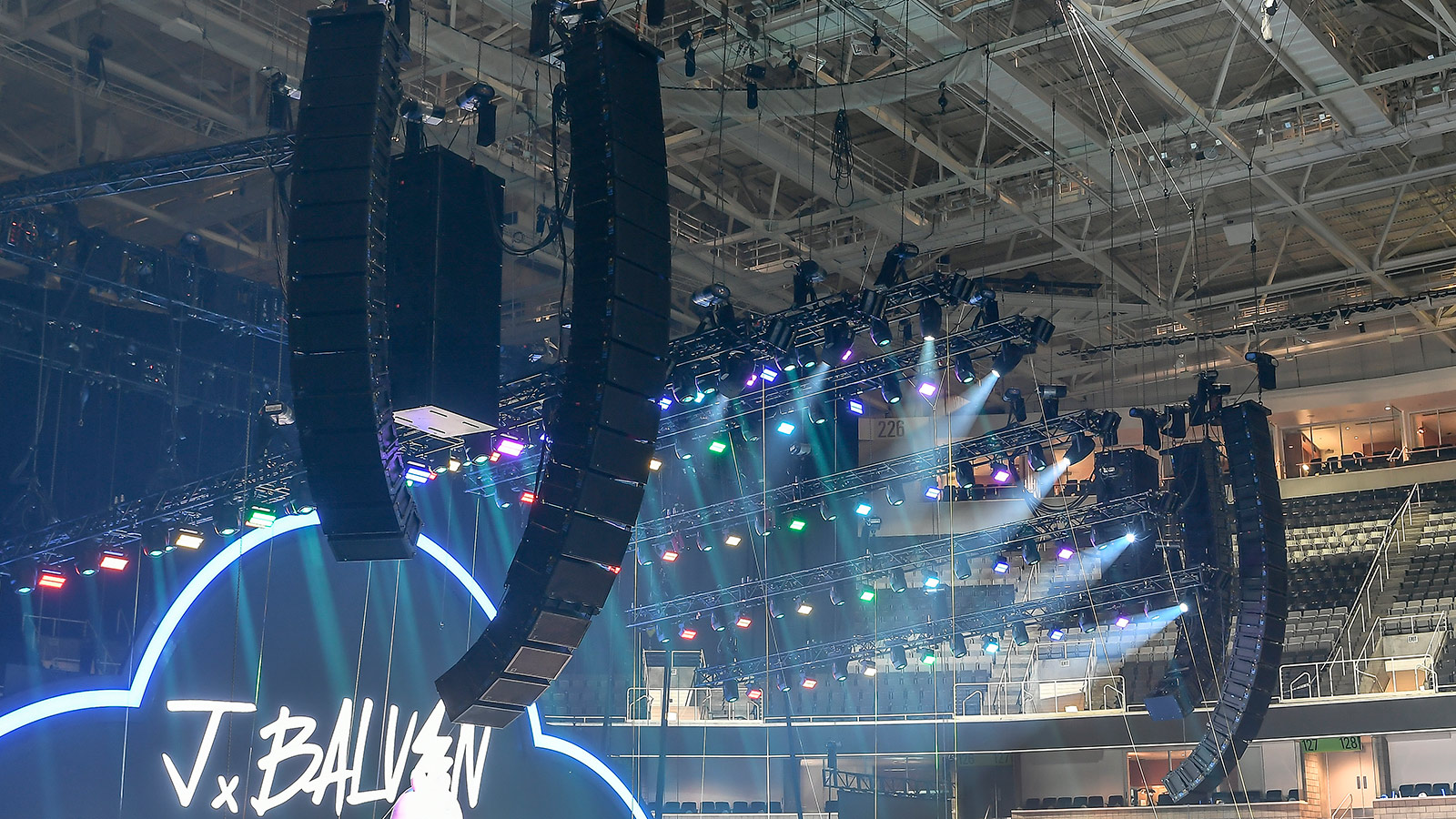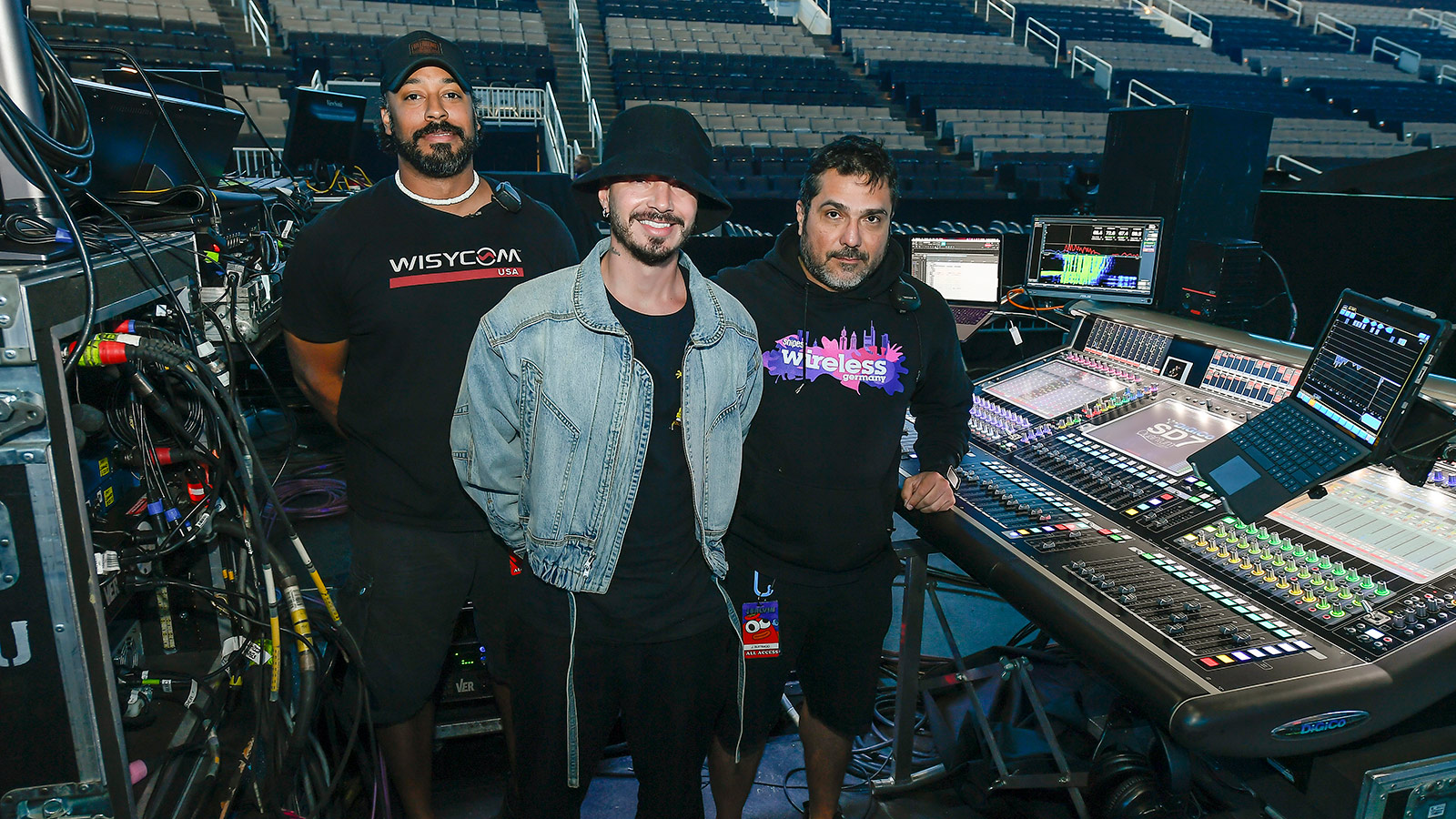After seeing firsthand the technology, materials and craftsmanship they put into the high frequency horns, I know why they are recognized as the best around the world. And the other thing I always can count on is technical support, not just here but anywhere in the world, and that is critical as J Balvin becomes more and more a global artist.”
John BuitragoFOH Engineer, J Balvin
After captivating audiences throughout South America and the Caribbean to establish himself as reggaeton’s reigning megastar, Colombian singer J Balvin has further expanded his global fan base on the current, four-continent “Arcoiris Tour.” To anchor audio production for the recently concluded North American leg, the tour relied on a Meyer Sound LEO Family line array system supplied by PRG Music Group.
The Meyer Sound option was strongly favored by John Buitrago, J Balvin’s FOH engineer for the past 11 years. For Buitrago, the LEO Family system provides a unique combination of accuracy, coverage uniformity and low end potency.
“I love mixing live shows with Meyer Sound, even in very large arenas, because it almost feels like I’m mixing in the studio,” says Buitrago. “I also love the fact that, when all the frequencies come together with the right balance at front-of-house, I can be confident that what I’m hearing is the same throughout the arena — thanks to the LEO Family and our great system engineer, Frank Peoples.”
The dual main front arrays in the large arena configuration each comprise 14 LEO-M line array loudspeakers with four LYON-W wide coverage line array loudspeakers under each array for down fill. Sixteen LYON-W are flown per side to extend stage-side coverage. For the propulsive low-end essential to reggaeton, the system includes 12 1100-LFC low frequency control elements flown six per side to augment a phalanx of 20 1100-LFC elements stacked on the floor. Front fills are 12 LEOPARD line array loudspeakers, with system drive and optimization provided by two Galileo Callisto AES master processors and six Galileo Callisto array processors.
“My favorite thing about this rig is the fact you can drive it hard and it still has plenty of headroom in it,” comments PRG Audio System Tech Frank Peoples. “I wouldn’t say John mixes extremely loud, but he knows how J Balvin likes the low end so he will push the subs pretty hard. But the system can definitely handle and generate plenty of energy to move the room.”
Peoples also has found the Meyer Sound solution a life-saver on days when the tour gets caught in a time crunch. “With all that’s involved in the visuals of this show, sometimes we don’t end up with much time to tune the audio,” he says, “and that’s when Meyer Sound’s Compass control software helps out quite a bit to make the job move faster. With the Compass Go app I can walk around with the tablet anywhere in the arena. When we’re pushing up to the time for doors, I can be moving around the arena making adjustments to levels while John is doing line check or balancing music. After the first few songs of the show, once John is comfortable, I can take my tablet and move around, even up to the upper balcony, to make sure everybody is experiencing the show the same way he is.”
For near field monitoring, Buitrago brought along a pair of ULTRA‑X40 loudspeakers, a new point source cabinet incorporating the same technologies used in the LEO Family arrays. “The ULTRA-X40s give me an exceptionally accurate representation of the main arrays,” says Buitrago. “They have been extremely helpful when there is high crowd noise, and especially during the B-stage segment of the show when the large inflatable props often come between me and the main arrays. The transition between the two sources is seamless.”
Two other key members of the tour team were monitor engineer Hugo Pinzon, on his second tour with J Balvin, and PRG Account Manager Jimmy Ibanez, who handled all arrangements and logistical planning for the tour audio production.
Prior to the San Jose concert, the audio crew took the opportunity to tour the Meyer Sound factory in nearby Berkeley. For Buitrago, the visit solidified his commitment to continue touring with the company’s systems.
“I now have a better understanding of the passion that inspired John Meyer’s career,” he says. “As just one example, I’ve always appreciated the smoothness and clarity of the high end on Meyer systems. And after seeing firsthand the technology, materials and craftsmanship they put into the high frequency horns, I know why they are recognized as the best around the world. And the other thing I always can count on is technical support, not just here but anywhere in the world, and that is critical as J Balvin becomes more and more a global artist.”
The North American leg of J Balvin’s “Arcoiris Tour” launched on August 2 in Montreal and wrapped in Los Angeles on October 26, with a total of 35 shows in 34 cities. Arcoiris is Spanish for “rainbow”, and without question the tour is resplendently colorful as it dazzles with over-the-top visual effects and giant props that Variety described as “a cross between a live cartoon and an awesome hallucinogenic experience.” The tour’s European and North African leg ran from May through July, and Latin American dates are scheduled through January 4 of 2020.
Born in Medellin, Colombia, J Balvin first broke through with the song “6 AM”, a duet with Farruko, in 2014. His 2016 single “Ginza” set a record for longest stay at Number One on Billboard’s Hot Latin Songs chart, and his fourth studio album, Energía, cemented his status as one of Latin music’s hottest superstars. In collaboration with Rosalía, J Balvin won “Best Urban Song” for “Con Altura” at the 2019 Latin GRAMMY Awards.







